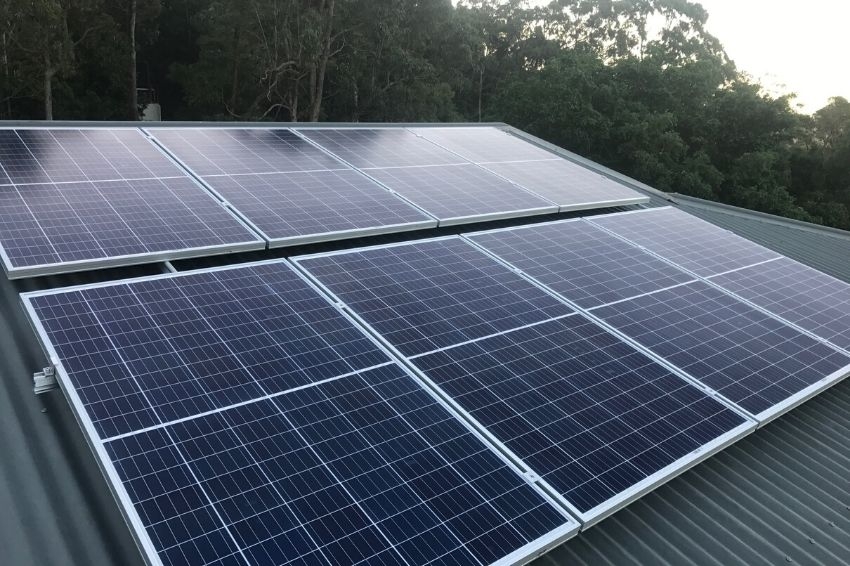This article addresses a very serious subject that is little known by photovoltaic designers and integrators. O mismatch It is a factor that, in more serious cases, can ruin a photovoltaic project.
If you have ever struggled with the question of why your photovoltaic system is not producing as it should, one of these problems could be due to mismatch. But after all, what is mismatch?
My definition for mismatch within a photovoltaic system is: “the mismatch between modules connected in series or parallel due to extrinsic or intrinsic factors to the photovoltaic system” [1].
This mismatch is when one photovoltaic module has a greater or lesser power generation capacity compared to another.
Therefore, in my work, I usually divide the mismatch into two types: mismatch manufacturing and mismatch of operation.
- Mismatch manufacturing: It is the difference in power between photovoltaic modules of the same model or batch due to the manufacturing process [1]. This difference can cause losses of up to 5% individually (considering the power that was supposed to be available) and up to 7% when the module is placed in a photovoltaic array [2];
- Mismatch of operation: It is the intensification of mismatch manufacturing process due to environmental factors to which a photovoltaic system is exposed [1]. For example: shading, different inclinations and orientations for interconnected photovoltaic modules, dirt, high temperature, cracks or other defects on the surface of photovoltaic modules, among others.
To better understand the phenomenon, let's take an example with an ideal photovoltaic system with three 190 Wp photovoltaic modules in series.
Knowing that in an STC situation (standard test conditions) the photovoltaic modules work at 190 W without mismatch (ideal), its curves can be seen in Figure 1. They all work at maximum power.

A cloud, at a certain point, cast a shadow across the entire surface of one of the photovoltaic modules.
Thus, the photovoltaic system now has new values for maximum power. Figure 2 shows the new photovoltaic curves in this situation.
In this case, the photovoltaic module with the lowest generation capacity, due to the presence of the cloud, limits the power of the other photovoltaic modules (note the red line on the curves).
This limitation is related to the current value of the photovoltaic module with the lowest capacity (series connection). In a photovoltaic system in series, the current must be the same for all photovoltaic modules.
However, the smaller capacity photovoltaic module cannot have the current of the larger capacity photovoltaic module. If we compare this second scenario with the previous situation, the difference is a reduction in the power of 20%.

The problem of mismatch It is a major cause of losses in photovoltaic installations. In the previous situation, the example was a total shadow caused by a cloud that slightly reduced the irradiance on one of the modules.
This situation can be much worse if the shadow is a building whose shadow cannot be avoided. A poorly planned project can result in a mismatch high, which makes the photovoltaic system unfeasible, and can even lead to more serious problems such as fires.
An example of a serious problem is the parallel connection of strings with different numbers of modules or the parallel connection of strings at different shading levels. In these cases the problem is the mismatch caused by a bad design.
The best solution to reduce this problem is to carry out a good photovoltaic project, which avoids losses caused by mismatch between modules and by system shading.
It seems difficult, but it can become simpler if you use photovoltaic design software like PVsyst, PV*SOL and Helioscope, among others.
A very effective solution to this problem is to avoid direct connection between photovoltaic modules. This is possible with the use of MLPE (Module-Level Power Electronics) or DMPPT (distributed maximum power point tracking) technologies, which are photovoltaic architectures with microinverters or architectures with power optimizers.
However, despite several benefits that such architectures bring), if the system is designed incorrectly, other problems will arise.
A well-planned photovoltaic system with a conventional photovoltaic inverter can live with the mismatch manufacturing process and also with shadow situations. Every choice of photovoltaic architecture must be studied to meet the customer's needs.

O mismatch of manufacturing will always exist and will be intensified by mismatch operational when the photovoltaic modules are connected together. Therefore, it is up to the designer to carry out a good project to avoid or mitigate the mismatch.
References
- [1] SAKÔ, EY; SILVA, JLS; MESQUITA, DB; CAMPOS RE; MOREIRA, HS; VILLALVA, MG Concepts and Case Study of Mismatch Losses in Photovoltaic Modules. In: 15th Brazilian Power Electronics Conference IEEE/COBEP 2019, Santos-SP, 2019
- [2] MANSUR, AA; Ruhul Amin, M.; ISLAM, KK Performance comparison of mismatch power loss minimization techniques in series-parallel PV array configurations. Energies, vol. 12, no. 5, 2019
- [3] JLS SILVA, Understanding mismatch: the terror of photovoltaic conversion. Available at: www.jlssilva.com/post/entendê-o-mismatch-o-terror-da-converso-fotovoltaica















One Response
Hello Ericka, I just took a solar integrator course. Your article was extremely important to avoid wrongly implementing the system. Without asking anyone, I was thinking about an east/west roof, dividing the systems between the east/west waters, so that on a day that dawns cloudy and then becomes sunny I would have better west use on the day, and vice versa. So according to my theory, and associated with your article, I would have high losses, as 50% would always be limiting the other 50%¨.